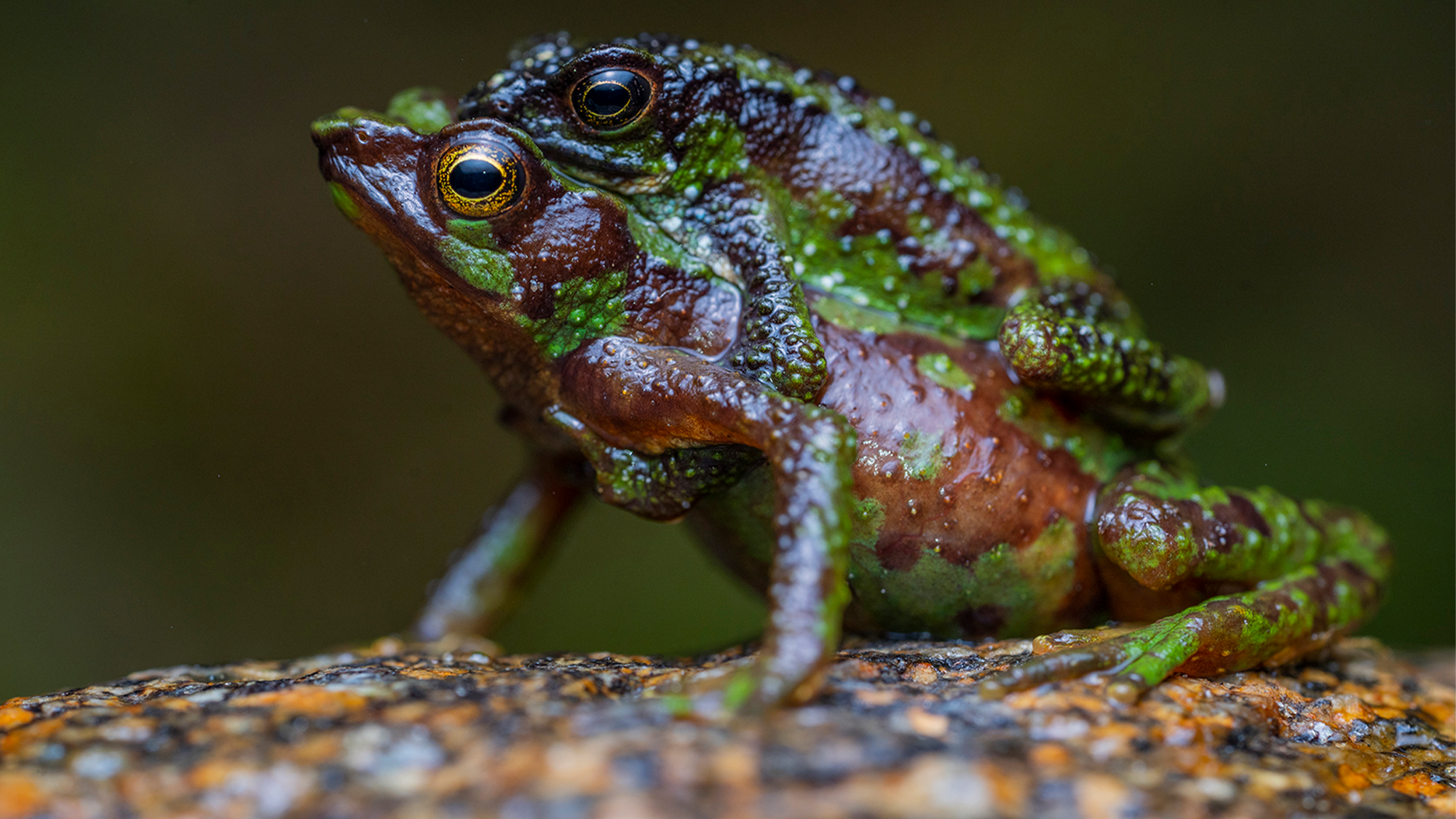

Earth’s amphibians are in serious trouble, but there is still time to save this unique class of animals. A study published October 4 in the journal Nature finds that two out of five amphibians are threatened with extinction and they continue to be the most threatened class of vertebrates. However, the new research also found that since 1980, the extinction risk of 63 species has been reduced due to conservation interventions.
[Related: Why you can’t put a price on biodiversity.]
“This proves that conservation works and it’s not all bad news,” Jennifer Luedtke, a study co-author and the manager of IUCN Red List Assessments at conservation organization Re:wild, said during a press conference. “We found that habitat protection alone is not sufficient. We need to mitigate the threats of disease and climate change.”
A check-up for amphibians
The findings are part of Global Amphibian Assessment II, an international series of conservation analyses based on evaluations of the 8,011 amphibian species listed on the IUCN Red List. The first Global Amphibian Assessment was published in 2004 and found that amphibians are Earth’s most threatened class of vertebrates. This second report confirms that the smooth-skinned animals are still more threatened than birds or mammals.
In the study, the team found that 118 species have been driven to extinction between 2004 and 2022. About 40 percent of the species studied are still categorized as threatened. This study also covers about 94 percent of the known amphibian species in 2022. According to Luedtke, about 155 new amphibian species are discovered every year, so there will likely be more species to add to the next Global Amphibian Assessment.
Climate change and associated habitat loss are the primary driver of these declines. The team estimates that current and projected climate change effects are responsible for 39 percent of status deteriorations since 2004. Habitat loss has affected roughly 37 percent of species in the same period.
Why amphibians are so vulnerable to climate change
Amphibians’ unique skin puts them in more danger in the face of a changing planet, since they use their skin to breathe. Increased frequency and intensity of storms, floods, droughts, changes in moisture levels and temperature, and sea level rise can all affect their very important breathing sites.
“They don’t have any protection in their skin like feathers, hair, or scales. They have a high tendency to lose water and heat through their skin,” Patricia Burrowes, a study co-author and herpetologist formerly with the University of Puerto Rico, said during a press conference. “The majority of frogs are nocturnal, and if it’s very hot, they will not come out because they will have lost so much water even in their retreat sites that they don’t have the energy to go out to feed. They won’t grow and won’t have energy to reproduce. And that can have demographic impacts.”
[Related: Hellbender salamanders may look scary, but the real fright is extinction.]
Extinctions have continued to increase with 37 documented in 2022. By comparison 23 species were reported extinct by 1980 and 33 in 2004. According to the report, the most recent species to go extinct were the frogs Atelopus chiriquiensis from Costa Rica and western Panama and Taudactylus acutirostris from Australia.
“Amphibians are essential parts of the ecosystem in a variety of ways, one of them being their role in the food web,” Kelsey Neam, study co-author and Re:wild’s Species Priorities and Metrics Coordinator, said during a press conference. “Amphibians are prey for many species and without amphibians, those animals lose a major source of their food and they are preying upon other animals like insects and other invertebrates. Without them to fulfill that niche, we will see a collapse of the food web.”
Amphibian pandemics
The most heavily affected amphibians were salamanders and newts, with three out of five salamander species at risk for extinction. While habitat loss is also the primary threat to salamanders, they are also particularly vulnerable to a disease called chytridiomycosis. It is caused by a fungal pathogen caused by the chytrid fungus that disrupts amphibian’s skin and physiological functions. When infected, amphibians can’t rehydrate properly, which creates an electrolyte imbalance that causes fatal heart attacks.

“Droughts exacerbate the infection intensity,” said Burrowes. “When the frogs have the potential to present some kind of defense mechanism, that defense mechanism is monitored by changes in precipitation and temperature.”
North America is home to the world’s most biodiverse community of salamanders, including a group of lungless salamanders in the Appalachian Mountains. This has conservationists concerned about what would happen if another deadly fungal disease called Batrachochytrium salamandrivorans, or B.sal, arrives in the Americas from Asia or Europe.
‘We know what to do’
The report highlights that the time to help these critical animals is now. The authors point to the Kunming-Montreal Global Biodiversity Framework adopted by 190+ signatory countries at the United Nations Biodiversity Conference in December 2022. The signing nations committed to halting all human induced extinctions, reversing and reducing the extinction risk of species tenfold, and to recovering populations to a healthy level.
“We know what to do. It’s time to really commit the resources to actually achieving the change that we say we want,” said Luedtke. “Amphibians will be the better for it and so will we.”
